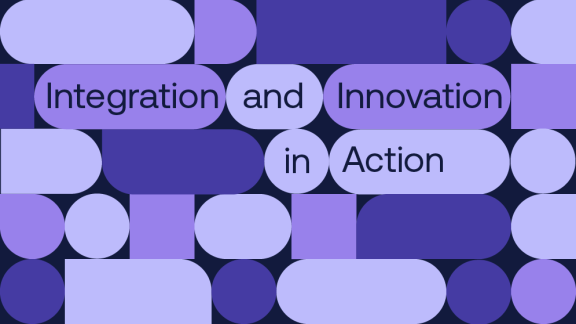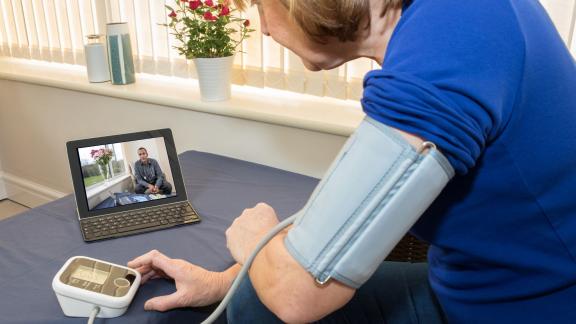Virtual ward care: breaking the 19th century mould

Our ability to deliver care on virtual wards is held back by the power of inertia and our reluctance to invest in complete digital solutions.
An acute hospital as it stands today would not be unfamiliar to Florence Nightingale or any of her 19th century medical colleagues. Wards, outpatient rooms, timed sit-downs with a doctor, and safari ward rounds led by consultants trailing troupes of junior doctors, all remain familiar sights.
Undeniably, some elements of care have changed to adapt to modern technology, such as the telephone and postal system. But even in hospitals with electronic patient records, the standard care remains rooted in the model developed in 19th century Britain, particularly for inpatient care.
A technological disconnect
Technology has disrupted the service industry in ways inconceivable 20 years ago. Online booking is the norm for nearly every aspect of life; banking is now almost exclusively conducted remotely; and even getting a taxi is now conducted from the supercomputers we all carry around in our pockets and still insist on calling ‘phone’.
There is a huge disconnect in the way that NHS staff and patients use technology in their personal lives and in how they access healthcare. Genuine disruptors in care that arise from technology are rare, but the emergent use of virtual wards appears to be one that is taking off.
Data is bundled into an application that allows the monitoring of patients at home, in ways previously only available in hospital
Virtual wards use similar technology to that used in remote doorbells, or heating controls for our homes, to transmit data about patients back to the healthcare professionals looking after them. This can include basic observations, but also urine dipstick analysis, glucose monitoring, daily weights and more.
The innovation is that all this data is bundled into an application that allows the monitoring of patients at home, in ways previously only available in hospital. There are a number of different models. In our hospital, we have mirrored a physical ward. We have doctors, nurses, pharmacists and physiotherapists who can engage remotely with patients, as well as additional community sourced services, such as phlebotomists.
Like any innovation, we have found that the forward thinkers and early adopters have rapidly and enthusiastically taken to this new model of care. Initially respiratory medicine for COVID-19, but shortly afterwards gall-bladder surgeons and palliative care.
We found that some staff were keen to use the remote medicine skills they developed in the crucible of the pandemic. We had dedicated digital health leadership in the form of a chief information officer, chief clinical information officer and chief nursing information officer team who were able to mobilise and connect resources rapidly. One consistent finding has been, that over 96 per cent of the 600 patients who have been in our virtual ward would want to be cared for there again. We have yet, in nine months of operation, to have a single day of staff sickness on the ward.
Creative engagement
Moving beyond the early adopter phase has required a more concerted effort. Developing further pathways involved more creative engagement. Listening carefully to the problems that clinicians needed to solve paid dividends, as did aligning with other innovative projects, such as robotic colorectal surgery. Consultants required structure and clear governance processes; some just needed to see that there was a volume of patients through a stable service before they would commit.
In this second wave we have seen diabetes care, pathways for robotic colorectal surgery and maternity develop. For many the change fatigue brought on by COVID-19 needed to recede before they could face changing again. It was essential for consultants to feel that they retained responsibility for their patients and that this was unquestioningly backed by the organisation.
A national mandate
What barriers remain to a culture where virtual care is the first thought for hospital care? There are further local initiatives that can be undertaken, but what is now required is a national mandate for this to become part of what is normal. There are basic requirements for this, such as regulatory support for this activity, commissioning guidelines and rewards for high-performing systems.
We have seen the green shoots of a virtual ward movement and the one thing we are sure of is how much it is valued and appreciated by patients
When frontline clinicians are buying into the digital revolution, the organisations which support their professional practice must stay closely in touch with how they are thinking. There are some key questions that will need to be answered: how will royal colleges support and maintain professional standards where care is delivered remotely? How will the National Institute for Health and Care Excellence review its guideline process to ensure that remote care is supported? What changes will be needed in agenda for change and the consultant contract to support a radically different approach to care delivery?
We have seen the green shoots of a virtual ward movement and the one thing we are sure of is how much it is valued and appreciated by patients. Growing these green shoots into a virtual ecosystem will take a sustained effort, but would be the first real step change in how hospitals deliver care for over a hundred years.
Sam Higginson is chief executive of Norfolk and Norwich University Hospitals NHS Foundation Trust. Dr Ed Prosser-Snelling is chief clinical information officer, consultant obstetrician and gynaecologist and associate medical director. Follow them on Twitter @SamHigginson12 @ProsserSnelling



